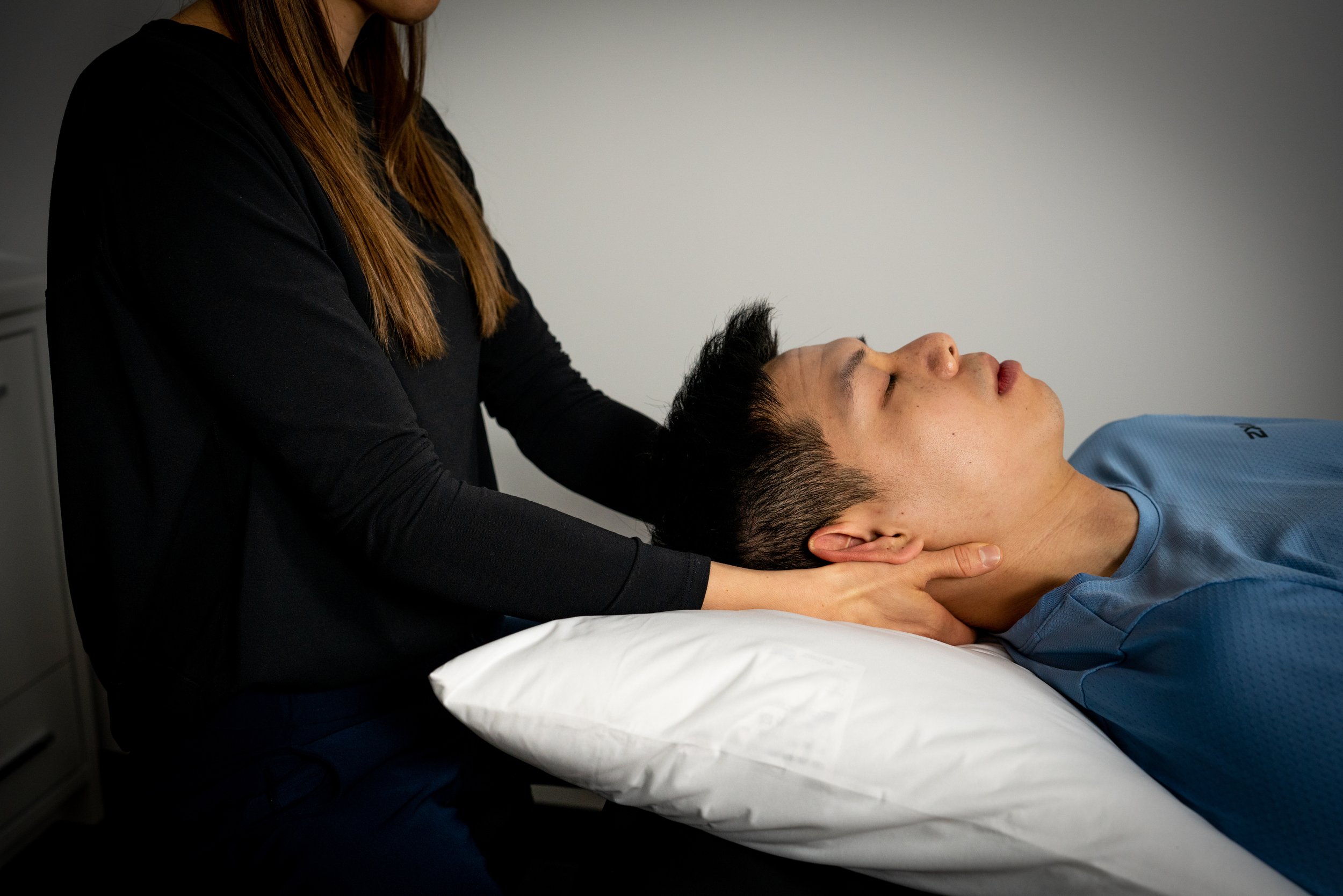TMJ Pain? Why the Problem Might Be Your Neck — and How Physiotherapy in Calgary Can Help
If you've been dealing with jaw pain, clicking, or difficulty chewing, you might be experiencing TMJ dysfunction. TMJ stands for the temporomandibular joint, the joint that connects your jaw to your skull. While many people assume jaw pain is a dental issue alone, TMJ symptoms are often linked to problems in the cervical spine (C-spine) — and that’s where physiotherapy can make a big difference
What is TMJ Dysfunction?
TMJ dysfunction refers to a variety of issues affecting the jaw joint and surrounding muscles. It’s not just a single condition but a collection of symptoms that can vary widely from person to person.
Common Symptoms of TMJ Dysfunction:
Jaw pain or tenderness
Clicking, popping, or grinding sounds in the jaw
Difficulty opening or closing the mouth fully
Headaches, particularly around the temples
Earaches or a sensation of fullness in the ear
Facial pain or tightness
Pain when chewing or speaking
Neck stiffness or upper back tension
What many people don’t realize is that these symptoms can be referred from the cervical spine. Dysfunction in the neck can cause muscle tension and nerve irritation that contributes to or mimics or exacerbates TMJ symptoms.
How Common is TMJ Dysfunction?
TMJ disorders affect a significant portion of the population:
An estimated 5–12% of the population is affected by TMJ disorders at any given time
(National Institute of Dental and Craniofacial Research, 2023)It is more common in women, particularly between the ages of 20–40
(Okeson JP, Management of Temporomandibular Disorders and Occlusion, 8th ed.)70–90% of people with TMJ issues also report neck pain or poor cervical posture, suggesting a strong link between jaw and neck function
(La Touche et al., Manual Therapy, 2009)
Why the Neck Matters
The jaw and neck are anatomically and neurologically connected. Dysfunction in the upper cervical spine (especially at C0-C3) can:
Refer pain to the jaw or head
Alter jaw mechanics
Increase muscle tension in the surrounding areas
That’s why people with chronic TMJ pain often don’t improve with dental treatments alone. If the neck isn’t assessed, the root cause may be missed.
How Physiotherapy Can Help TMJ Dysfunction
At Fulcrum Physiotherapy in Seton, Calgary, we provide comprehensive TMJ assessments that include a full evaluation of the cervical spine. Our approach is holistic, evidence-based, and designed to uncover the underlying drivers of your pain.
Treatment may include:
Manual therapy for the jaw and neck
Cervical spine mobilizations or manipulations
Myofascial release and dry needling
TMJ-specific home exercises
Postural retraining and ergonomics
Education to reduce habits like clenching, grinding, or forward head posture
Why Choose a Physiotherapist for TMJ Pain?
While dentists and specialists play a valuable role in managing TMJ dysfunction, physiotherapists are uniquely trained to assess and treat the musculoskeletal components — including the often-overlooked cervical spine. We don’t just chase symptoms; we look for patterns and root causes.
Final Thoughts
If you’re living with TMJ pain that hasn’t responded to bite guards or dental work, your neck might be the missing piece. At Fulcrum Physiotherapy, we combine expertise in jaw mechanics, musculoskeletal anatomy with deep knowledge of spinal function to deliver targeted, effective relief.
Book your TMJ assessment at Fulcrum Physiotherapy today and get the answers you’ve been looking for.
Looking for TMJ treatment in Calgary? Fulcrum Physiotherapy offers expert, personalized care for jaw pain, neck dysfunction, and related symptoms. We help you move and feel better — for the long term.
References:
National Institute of Dental and Craniofacial Research (2023). Prevalence of TMJ Disorders. https://www.nidcr.nih.gov
Okeson, J. P. (2020). Management of Temporomandibular Disorders and Occlusion (8th ed.). Elsevier.
La Touche R, et al. (2009). "The relationship between cervical spine and temporomandibular disorders: A systematic review." Manual Therapy, 14(5), 491–496. doi:10.1016/j.math.2009.01.002

